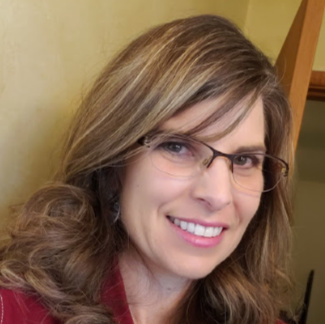Guest post by Alissa Lindeman
As part of our community outreach program, we connected with a JOBS program through the local community college to increase access for low-income populations to health and nutrition information. Participants in the program were adults who had lost their jobs for one reason or another and were receiving TANF (Temporary Assistance for Needy Families). They were required to attend the program to learn job skills: resumes and applications, appropriate dress, and many other skills to help them find and maintain jobs. We connected with the program coordinator and asked to implement two of our programs combined. It was a beginning fitness program designed to introduce inactive populations or those with chronic pain to walking for fitness, and our nutrition education program. Each week, two of us would meet with the class, lead them through some stretches, take them for a walk, assist with journals for their walking time and distances, and set goals for walks on their own. We would then return to the classroom for a nutrition mini-lesson and demonstration of a healthy recipe. The coordinator was not familiar with us or our program, but he trusted it sounded like a benefit for the participants and welcomed us to come to visit once a week, for nine weeks.

In the first class, we were met with a combination of disinterest to open hostility. Despite being asked to wear comfortable shoes, nobody had really complied, and we had people in flip flops, boots, and shoes not conducive to walking. We did our best to be engaging, non-judgmental, and enthusiastic, but we did not feel it was going very well. When we brought participants out for the walk, it was met with heavy sighs, and several of them stopped at their cars for cigarettes, energy drinks, or sodas to bring on the walk. We took a very slow, short walk around the building, making conversation and getting to know participants as they trudged along in what seemed like disinterest. During the nutrition lesson, many of them were on their cell phones, and they didn’t even seem to be paying attention. We left that first class, thinking it was going to be a very long nine weeks, but we had committed, and we would keep trying.
.jpg)
Week after week, we returned. We were positive; we were not judgmental; we encouraged, answered questions, and took those walks that just involved chatting and conversation. Each week, a few more participants were excited to show us that they wore walking shoes and workout clothes, or reporting to us how many walks they had taken that week. They started to ask us questions about nutrition and recipes and ask for help with issues they or family members had as far as weight management or healthy foods. When we finished our nine weeks, we were sad to see it end, and they were as well. The instructors and participants set a goal together to continue what we started. A year later, they reported to us they continued going for walks once a week during classes, supporting each other and encouraging each other to exercise and eat healthy, carrying on their own the structure we created in those sessions. The first session and last session were as different as night and day, and what I learned as a teacher from that experience is that connections are essential. It was not the content that made them more receptive to us and our instruction, but the conversations on those walks, the connections made between us that made all the difference.
This guest post was written by Teacher Alissa Lindeman after completing The Heritage Institute course Classroom Management That Works with Mary Ann Johnson.

I have spent some time as a high school Language Arts teacher followed by some years away from teaching to stay at home with my children. For the past 5 years, I have been working as a SNAP-Educator with Oregon State University Extension. The SNAP-Education program involves multiple layers of programming and classes that serve many purposes for people in our community. A light explanation to cover the spectrum is that our work is 'obesity-prevention in low-income populations'. My time in this program has allowed me experiences to stretch my teaching skills working in schools and community programs with all ages, from PreK to senior citizens.



.jpg)
 I have spent some time as a high school Language Arts teacher followed by some years away from teaching to stay at home with my children. For the past 5 years, I have been working as a SNAP-Educator with Oregon State University Extension. The SNAP-Education program involves multiple layers of programming and classes that serve many purposes for people in our community. A light explanation to cover the spectrum is that our work is 'obesity-prevention in low-income populations'. My time in this program has allowed me experiences to stretch my teaching skills working in schools and community programs with all ages, from PreK to senior citizens.
I have spent some time as a high school Language Arts teacher followed by some years away from teaching to stay at home with my children. For the past 5 years, I have been working as a SNAP-Educator with Oregon State University Extension. The SNAP-Education program involves multiple layers of programming and classes that serve many purposes for people in our community. A light explanation to cover the spectrum is that our work is 'obesity-prevention in low-income populations'. My time in this program has allowed me experiences to stretch my teaching skills working in schools and community programs with all ages, from PreK to senior citizens.



